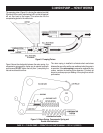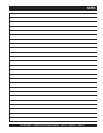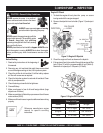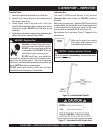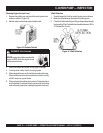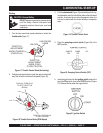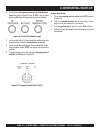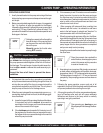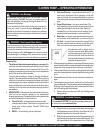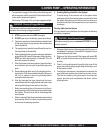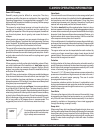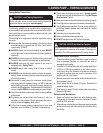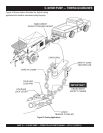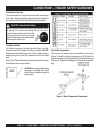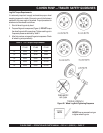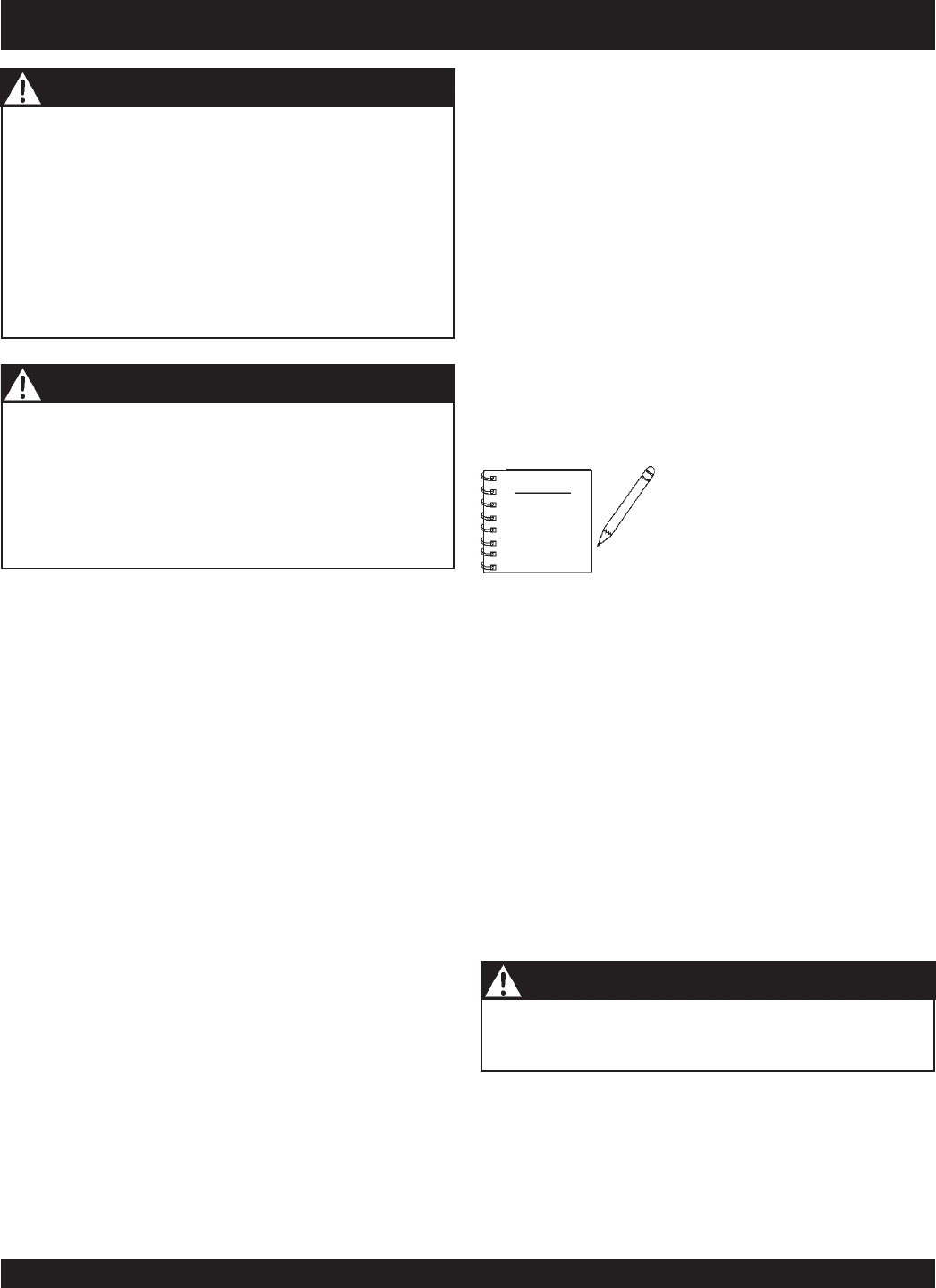
PAGE 30 — C-30HDN PUMP — OPERATION AND PARTS MANUAL — REV. #11 (03/29/12)
If a blockage occurs, find where it is and clear it before
further pumping. DO NOT increase the engine speed to
clear the blockage. Increasing the engine speed will only
compound the problem .
If you repeatedly pull the throttle all the way out and try to
force your pump to push through
blockages
, due to
separation of material in the hose or manifold, you will soon
have breakdowns and costly repairs which are not covered
under warranty.
It will be necessary at times to move your pump from one job
site location to another. Before moving the pump, make sure
to pump the remaining concrete out of the hopper.
Moving the pump with a
full hopper
of concrete can cause
severe damage or breakage of the axle and axle springs,
excess strain and pressure on the hub and bearing assembly.
C-30HDN PUMP — OPERATING INFORMATION
Pumping Tips
1. The effects of heat and excessive time on concrete: Hot
concrete, commonly referred to as a hot load, is concrete that
has been in the redi-mix truck in excess of 2 to 3 hours. On
a hot day, this amount of time is even less. A brief explanation
of why heat and time affect concrete:
Concrete starts setting by drying up through a chemical
reaction. The catalyst to this reaction is heat. When pumping
a hot load, it is important to remember that when you have to
stop pumping for any reason, add water to the concrete in the
hopper and hand mix and move concrete in the hose every
5 minutes. If the shut down time becomes too long, wash out
immediately.
2. ADMIXTURES: Admixtures that are designed into the con-
crete mix by the redi-mix company or an architectural
engineering company. This section lists common admixtures
and a brief explanation of their functions:
A. Pozzolith 300 – or the equivalent acts as a water
retarder and a lubricant. On a lean mix, long pushes, stiff
mixes, and vertical pushes, Pozzolith 300R helps
pumpability.
B. MBVR – air entraining, acts as a lubricant.
All admixtures will be shown on the
redi-mix concrete ticket. Before start-
ing the pumping job, ask the driver of
the redi-mix truck to see the concrete
ticket and note the admixtures that exist
and take the proper action.
3. When pumping long distance or pumping stiff mixes, you can
expect a drop in volume compared to shorter lines and wetter
mixes due to the change in valve efficiency or cavitation.
4. Leaking manifold seals or hose coupling gaskets which leak
water can cause separation and subsequent jamming at that
point.
5. Damaged hoses with internal restrictions can cause block-
ages.
6. If a blockage occurs in a hose, “walk the hose” until you find
the point of trouble. The hose will be soft immediately past the
blockage. If this happens at the start, disconnect the hose at
the first coupling past the blockage.
A. Elevate the hose at that point with the blockage area
hanging down.
WARNING - Line Blockage
WARNING - Clear Hopper Before Moving
NOTE
C. Calcium Chloride – commonly referred to as C.C., is
used as an accelerator. When pumping a load with
calcium chloride, it is recommended that you wash out
if the waiting time between delivery trucks becomes too
long.
D. Super Plasticizers – acts as an accelerator. The
concrete will look very wet after the super plasticizer is
added, but will begin to set up very fast. Wash out
immediately if you do not have a truck waiting. Super
plasticizers are used mainly on commercial jobs.
E. Red Label – acts as a water retarder and an accelera-
tor. Red label will be used mainly on commercial jobs.
F. Fly Ash – is used to help increase the strength of the
concrete and decrease the cement content per yard.
This is one of the most common admixtures used.
Use
extreme
CAUTION! The hose line is under pressure and
a rupture can cause
serious injury.
WARNING - Line Under Pressure
B. Using a hammer, you can pound the down-stream edge
of the packed area until it is free to flow. Shake all of the
sand and gravel out to the end of the hose.
C. Before reconnecting the hose, start the pump and run a
small amount of concrete out to the end of the hose. This
will assure that all of the separation is out of the hose.



